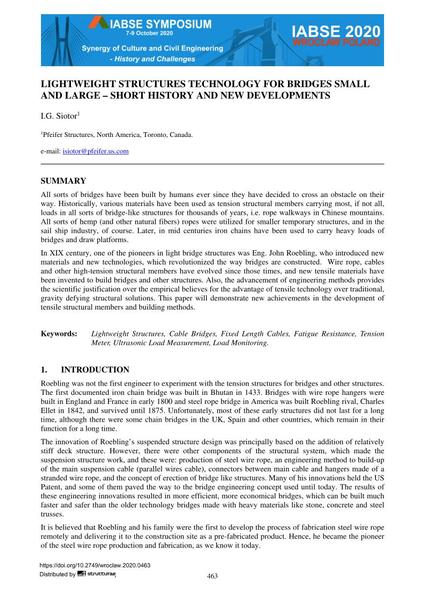|
Abstrait:
|
All sorts of bridges have been built by humans ever since they have decided to cross an obstacle on their way. Historically, various materials have been used as tension structural members carrying most, if not all, loads in all sorts of bridge-like structures for thousands of years, i.e. rope walkways in Chinese mountains. All sorts of hemp (and other natural fibers) ropes were utilized for smaller temporary structures, and in the sail ship industry, of course. Later, in mid centuries iron chains have been used to carry heavy loads of bridges and draw platforms. In XIX century, one of the pioneers in light bridge structures was Eng. John Roebling, who introduced new materials and new technologies, which revolutionized the way bridges are constructed. Wire rope, cables and other high-tension structural members have evolved since those times, and new tensile materials have been invented to build bridges and other structures. Also, the advancement of engineering methods provides the scientific justification over the empirical believes for the advantage of tensile technology over traditional, gravity defying structural solutions. This paper will demonstrate new achievements in the development of tensile structural members and building methods.
|

